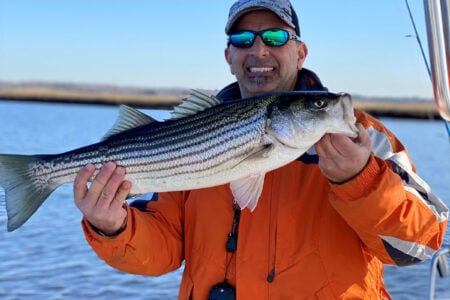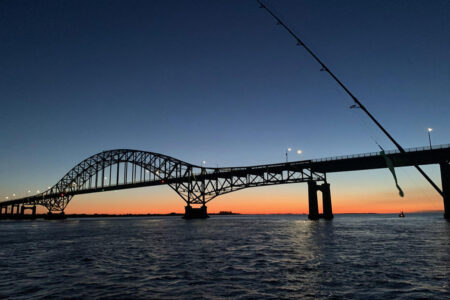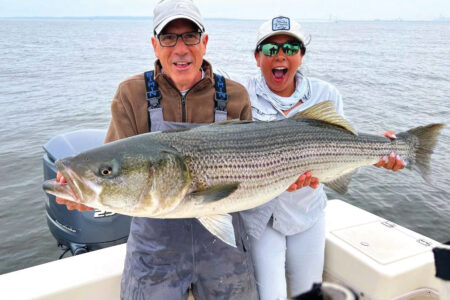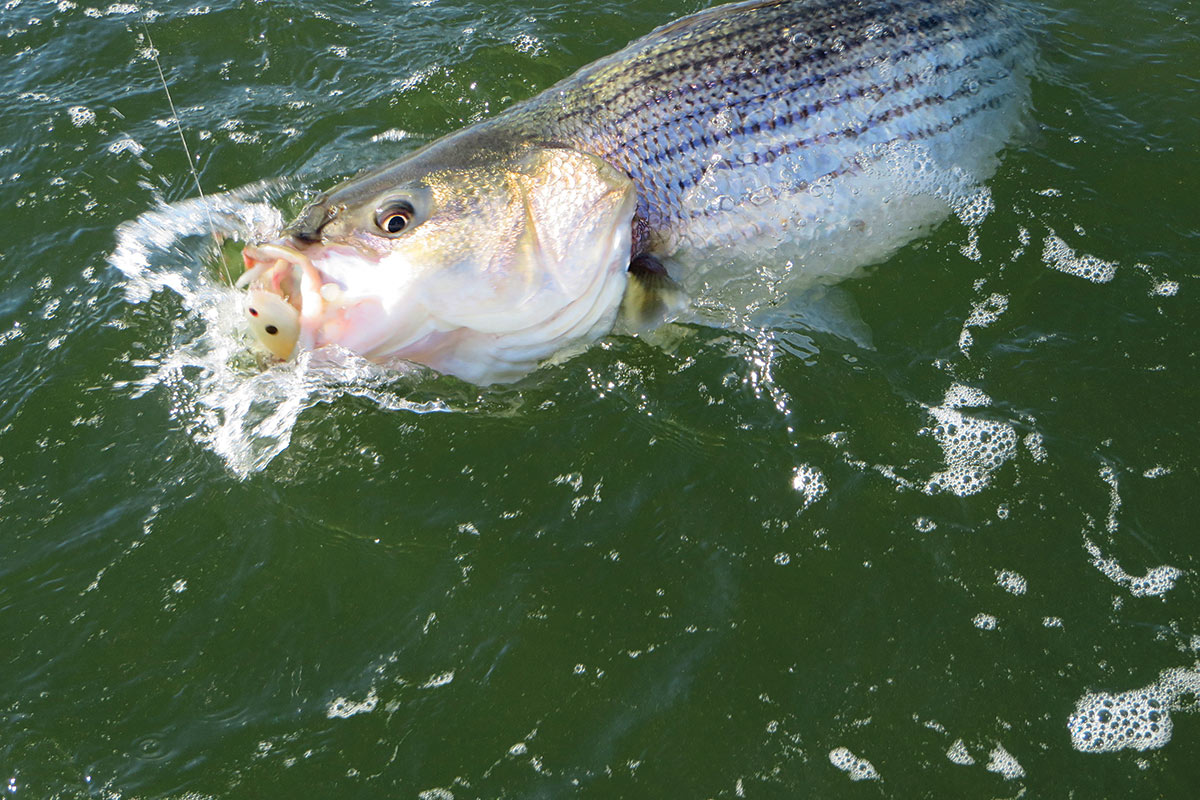
“Scientific evidence and what fishermen in our states are seeing on the water tell us that bold action to protect striped bass is long overdue.”
The Atlantic States Marine Fisheries Commission’s (ASMFC) annual Spring Meeting took place on April 29 – May 2, 2019, in Arlington, Virginia. One of the more highly-anticipated timeslots over the four days was that of the Atlantic Striped Bass Management Board (Board) on Tuesday. On the agenda were such items as the presentation and consideration of acceptance of 2018 Benchmark Stock Assessment and Peer Review Report for management use, consider management response to the 2018 Benchmark Stock Assessment, review of the Technical Committee Report on Reductions Needed to Achieve Fishing Mortality Reference Points in 2020, review of the Adaptive Management Timeline and to consider forwarding comments to NOAA Fisheries opposing Proposed Measures to Lift Ban on Recreational Striped Bass Fishing in Federal Block Island Sound Transit Zone. I’ll get to those items in a moment, but first there was a lot of talk and action leading up to this meeting.
Pre-meeting Actions
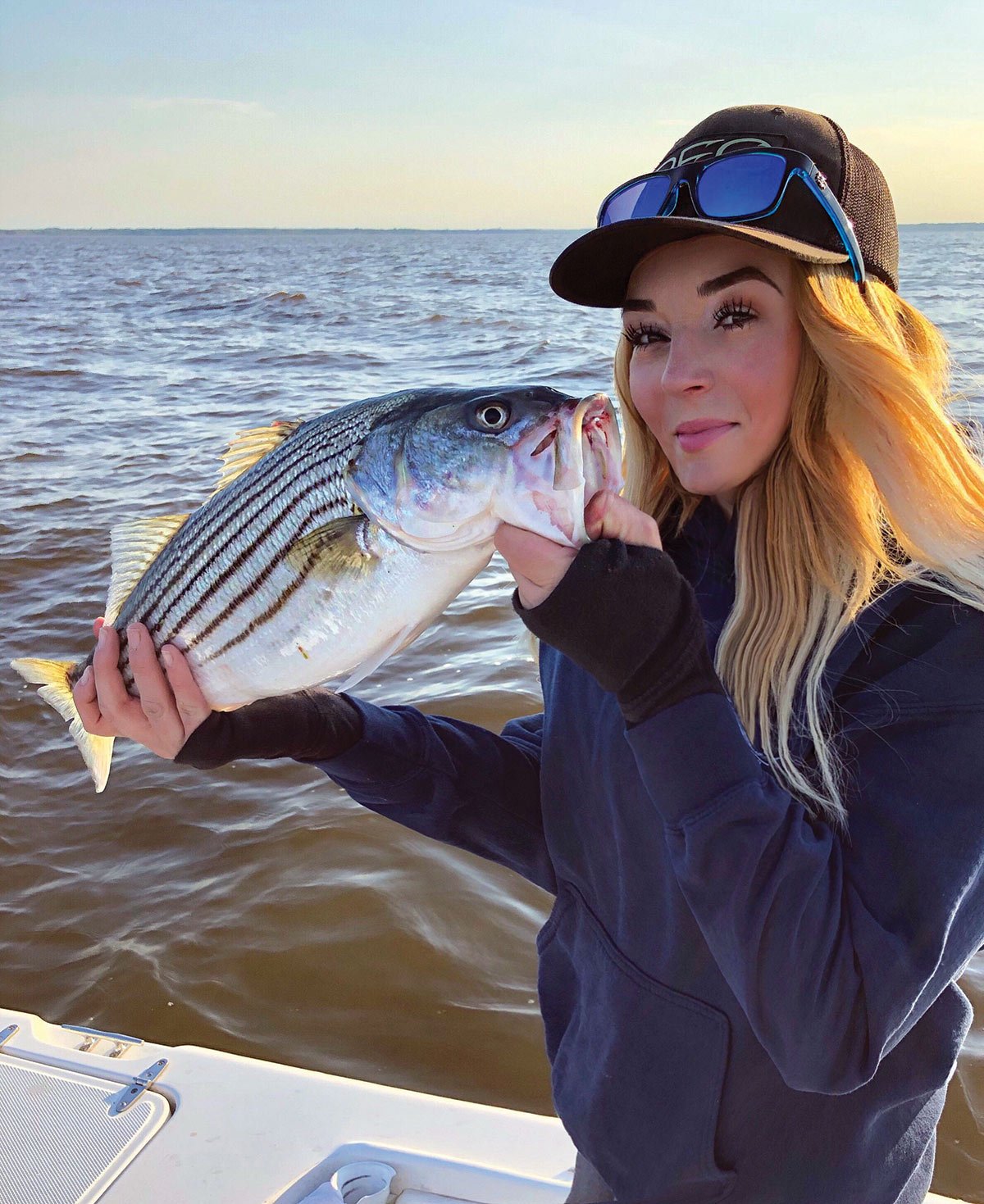
On April 17, officials from the states of Virginia, Connecticut and Massachusetts sent a letter to the ASMFC requesting action be taken sooner, rather than later, towards reducing fishing mortality. The letter started off by saying, “We are writing today to express our serious concerns regarding the current status of Atlantic striped bass, and to request that the Commission take immediate action to prevent further depletion and start rebuilding striped bass stocks. As you know, a recent benchmark stock assessment found that striped bass are overfished and that overfishing is occurring. Even more troubling, new data show that striped bass spawning stock biomass has remained below its critical lower threshold since 2013, and the fishing mortality rate has remained above its upper threshold since 2010. It is evident that status quo management will be inadequate to return the striped bass stock to target levels of biomass and fishing mortality indicative of a healthy fishery.”
It concluded with, “Scientific evidence and what fishermen in our states are seeing on the water tell us that bold action to protect striped bass is long overdue. Rebuilding striped bass stocks and sustaining them at target levels of abundance is incredibly important to fisheries in both of our states. We urge the Commission to implement measures that will reduce striped bass harvests to sustainable levels as quickly as possible.”
On April 22, in a memorandum from the ASMFCs Atlantic Striped Bass Technical Committee (TC) to the Board, the TC made their recommendations for the reduction in harvest required to achieve F threshold and F target in 2020, along with examples of the recreational options needed to achieve those reductions as a result of a task from the Spring Meeting.
In order to have a 50 percent chance of being at or below the F target (F=0.197) in 2020, removals for 2020 needed to be 5.9 million fish. This is a 17 percent reduction from 2017 levels and a 5 percent increase from 2018 levels. This assumed that 2019 removals were equal to 2018 removals.
The TC concluded that in the ocean (which includes ocean waters from Maine – North Carolina and non-Chesapeake Bay inland waters like Delaware Bay and Long Island Sound), the current minimum size limit is 28 inches. In order to reduce total removals by 17 percent, the size limit would need to be increased to 35 inches. Under the 35 inch size limit, dead releases are expected to increase by 3 percent in the ocean. This increase is more than offset by the reduction in harvested fish. A 17 percent reduction is estimated if Maryland raised the minimum size limit from 19 inches for the summer/fall season to 21 inches. In Virginia, an 18 percent reduction is estimated if the 20-inch minimum size limit is increased to 22 inches. Under these scenarios, dead releases are expected to increase by 4.3% for Maryland and 3.5% for Virginia, but again, the increase is offset by the reduction in harvest.
On April 23, the Virginia Marine Resources Commission voted unanimously (7-0) to enact an emergency closure for the spring recreational striped bass trophy season. The emergency measure will eliminate the spring striped bass trophy season in the Bay from May 1 through June 15, the Coast from May 1 through May 15, and the Virginia tributaries to the Potomac River from April 29 through May 15. Starting May 16 through June 15 fishermen will be able to catch and keep two striped bass from 20 to 28 inches.
Lastly, on April 25, the Massachusetts Division of Marine Fisheries (DMF) initiated new striped bass conservation regulations which made it, “…unlawful for any fisherman to gaff or attempt to gaff striped bass measuring less than 28 inches total length, and for a commercial fisherman fishing on an open commercial striped bass fishing day to gaff striped bass measuring less than 34 inches total length.” The DMF also implemented a new rule for 2020 which stated, “…recreational anglers not fishing aboard for-hire vessels will be required to use inline circle hooks when fishing for striped bass with whole or cut natural baits. This will include fishing with whole or cut natural baits while in possession of striped bass as well. This circle hook mandate will not apply to natural baits attached to an artificial lure to be trolled, jigged, or casted and retrieved (e.g., tube and worm). Nor will the mandate apply to any natural bait affixed to a treble hook and fished using the snag and drop technique. A hook is considered to be an in-line circle hook only if it is manufactured so the barb of the hook is in-line with the shank and bend of the hook and is turned perpendicularly back to the shank to form a circular or oval shape.”
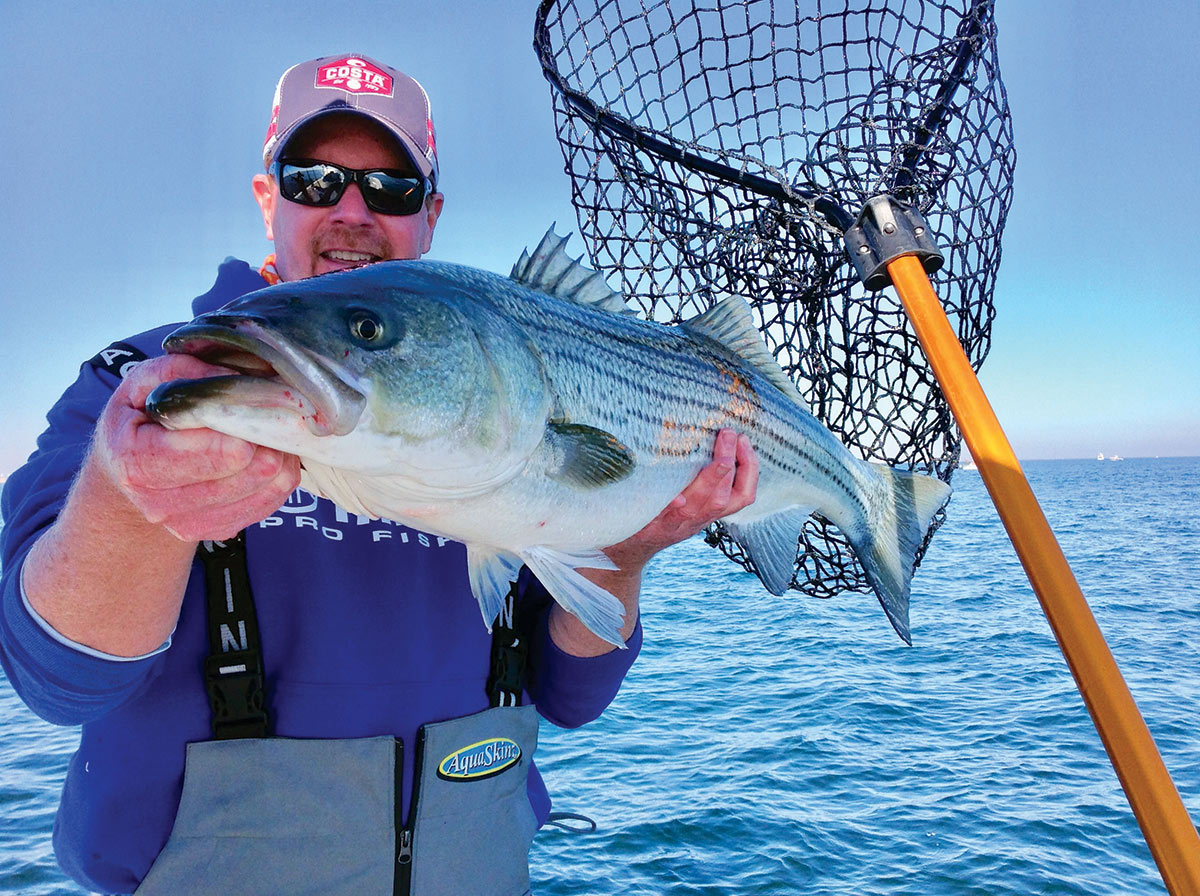
The Nitty Gritty
Back to the meeting in Virginia on April 30. The Stock Assessment, which indicates that striped bass are both overfished and being overfished, was the first agenda item to be discussed and subsequently approved. Next, since triggers in Amendment 6 were tripped by the overfished and overfishing designations, consideration of how management would respond to said stock assessment were addressed. These triggers require the Board to reduce Fishing Mortality (F) to the target within one year and rebuild the biomass to the target with the rebuilding schedule not to exceed 10 years. The options to complete these action are through an addendum or an amendment. The anticipated timelines on the two actions are somewhat different and outlined as follows:
Initiate Addendum
- August 2019; review Draft for Public Comment
- Conduct public hearings during fall, 2019
- October 2019; final action implemented with new regulations (as applicable) for 2020 season
Initiate Amendment
- August 2019, Draft PID for Public Comment
- Conduct public hearings during fall, 2019
- October 2019; Board tasks PDT to develop Draft Amendment
- February 2020; Draft for Public Comment
- Conduct public hearings during spring, 2020
- May 2020, final action implemented with new regulations (as applicable) for 2020 season
A motion was made to initiate an addendum to achieve the F target or lower within one year. This was followed by a substitute motion as follows:
Move to substitute the initial addendum to address the overfishing status of striped bass and implement measures to reduce F back to the target that would include:
- Minimum fish size for the coast and a minimum fish size for the Chesapeake Bay
- Slot limit that would prohibit harvest of fish over 40 inches
- Mandatory use of circle hooks when fishing with bait coastwide to reduce discard mortality
- A provision that states could use seasonal closures in conservation equivalency proposals
- Apply needed reductions equally to both commercial and recreational sectors
- Apply needed reductions proportionally based on total removals in 2017 to both commercial and recreational sectors
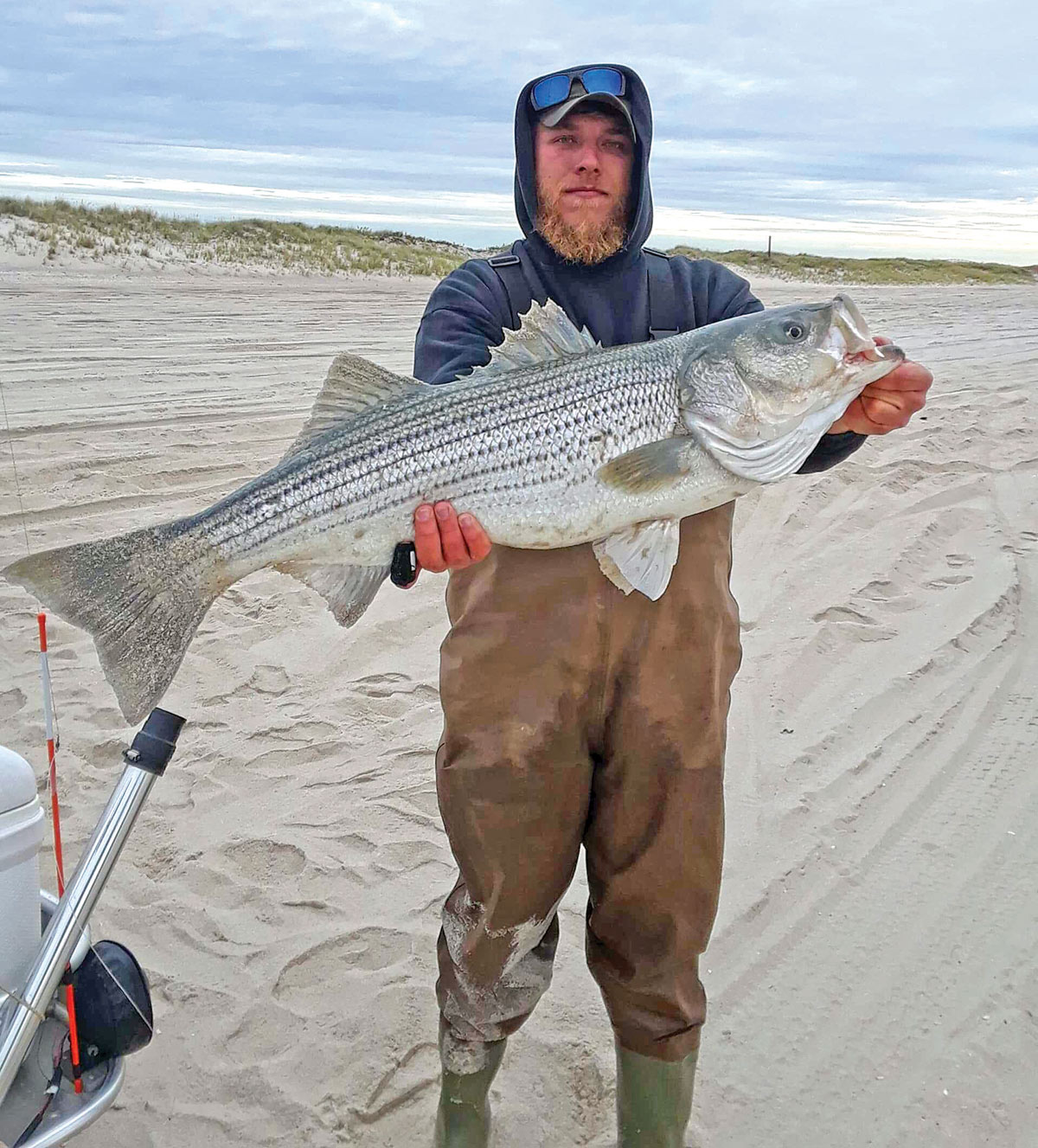
The motion carried unanimously, but what does that mean going forward? Well, in short, the Plan Development Team (PDT) will meet over the next few months and, barring any unforeseen delays, present a draft addendum for review by the ASMFC at the summer meeting which will take place August 6 – 8, 2019. Following the timeline noted above in the comparison on addendum versus amendment, the amendment would then go out for public hearings and comment in the fall to be reviewed and presumably approved at the October meeting with implementation of any new regulations for the 2020 fishing season to follow.
Last, but certainly not least on the agenda, was to consider forwarding comments to NOAA Fisheries opposing Proposed Measures to Lift Ban on Recreational Striped Bass Fishing in Federal Block Island Sound Transit Zone. This decision had been delayed by the ASMFC to follow the approval of the Benchmark Stock Assessment. A motion to forward the letter to NOAA in opposition of opening the Block Island Transit passed by a vote of 13 in favor, 1 opposition (New York) and 2 abstentions. Ultimately the decision remains in the hands of NOAA.
